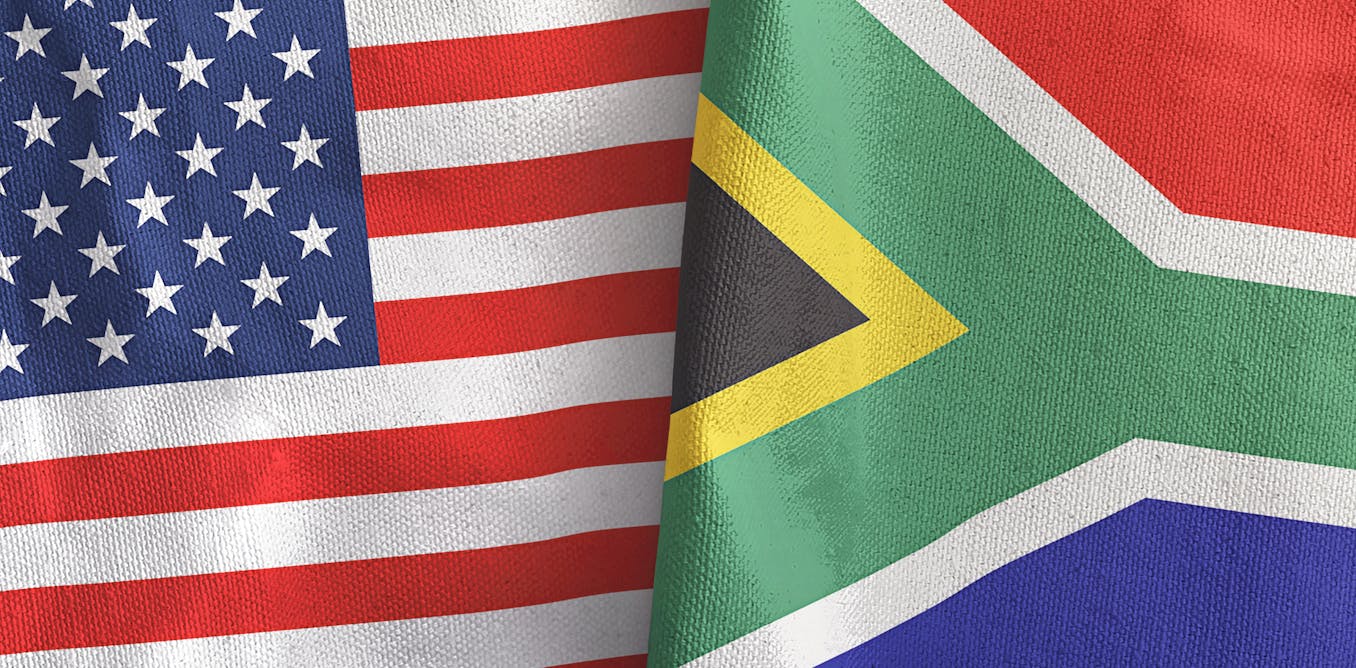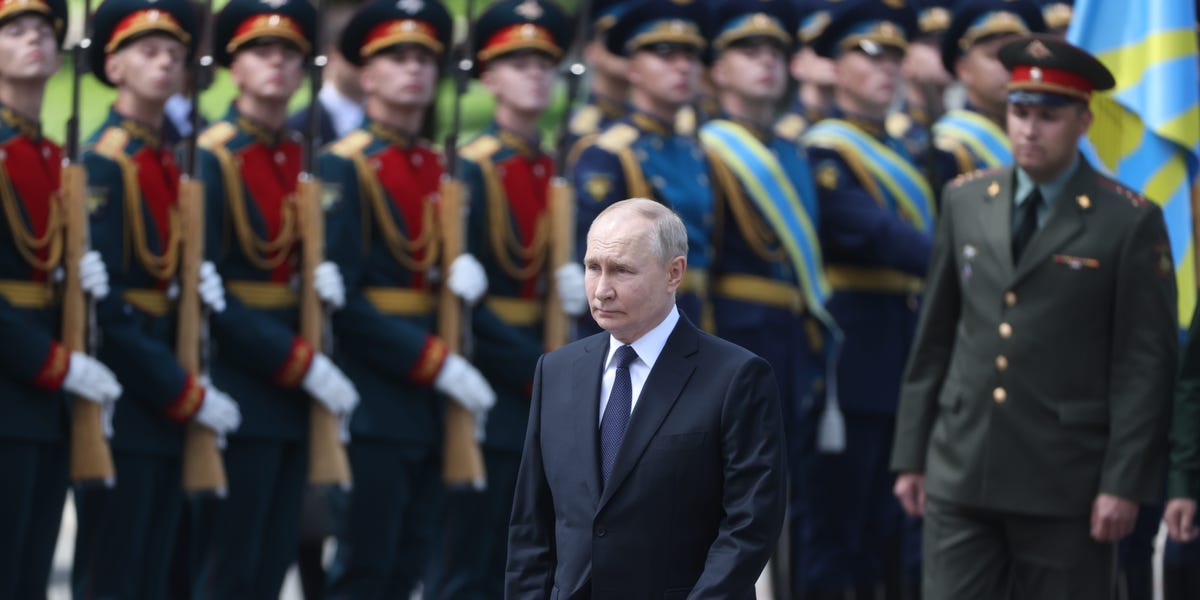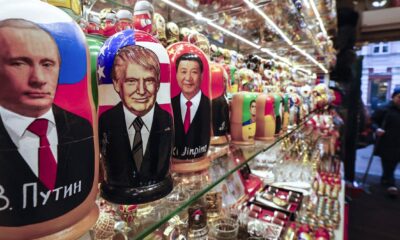China
Agoa trade deal talks: South Africa will need to carefully manage relations with the US and China

South Africa must navigate its economic relationships cautiously amid rising tensions between China and the US, particularly during the 2023 Agoa Summit, to protect its interests and strengthen diplomacy.
South Africa must tread carefully in its economic relationships to avoid being caught in the escalating tension between east and west, and more specifically China and the US. The country’s hosting, and the outcome, of the 2023 Agoa Summit should strengthen its role in diplomatic relations and contribute towards safeguarding the country’s economic interests.
From 2-4 November 2023, the US and 35 sub-Saharan African countries will meet in Johannesburg for the 20th Africa Trade and Economic Cooperation Forum (Agoa Forum). It entails strengthening trade and investment ties between the US and sub-Saharan Africa through the Africa Growth and Opportunity Act (Agoa), US legislation which provides various trade preferences to eligible countries in the region.
Given Russia’s continuing war in Ukraine and its rising tension with Nato, plus the China-US trade war, tensions between east and west are high. South Africa has come under attack for its non-alignment role in the Ukraine war. It refused to support UN resolutions condemning Russia. This resulted in some US congressmen pushing for the forum to be moved out of South Africa.
The country recently hosted the 15th Brics summit, which resolved to expand the Brazil, Russia, India, China and South Africa grouping to 11 member states. The enlargement will bolster Brics’ role as a geopolitical alternative to the west, which is dominated by the US. Might this be a direct challenge to American hegemony?
I have been researching major global economic developments, such as globalisation and the impact of the 2008 global financial crisis, for 20 years. This body of work shows the risks that come with behaviour like South Africa’s. The country could find itself in the middle of a tense situation.
South Africa needs to pull off an exceptional balancing act in managing its international relations in a sensible way that protects and advances its economic interests.
Note that the geopolitical tensions between China and the US are not just about trade disputes. They also include espionage, China’s Belt and Road Initiative, climate change and environmental issues, and tensions over Hong Kong, Taiwan and South China Sea disputes.
As a major source of infrastructure financing to sub-Saharan Africa, China is now the region’s largest bilateral official lender. Its total sub-Saharan African external public debt – what these governments owe to China – rose from less than 2% before 2005 to over 17% in 2021.
Agoa might present a challenge to China as competition for its own interests in Africa. China would like African countries to untie or loosen their agreements with the US. It is thus a good moment to take stock of the actual benefits South Africa has derived from the Agoa agreement with the US.
What Agoa is about
The Agoa agreement was approved as legislation by the US Congress in May 2000 for an initial 15 years. On 29 June 2015 it was extended and signed into law by then president Barack Obama for a further 10 years to 2025.
It will come into review again in 2024, hence the importance of the upcoming summit. Recently, Louisiana senator John Kennedy introduced a bill to the US Congress to extend Agoa by a further 20 years to 2045. This is a bid to counter China’s growing influence in Africa, and to continue to allow sub-Saharan African countries preferential access to US markets.
Agoa’s benefits to South Africa
In 2021, the US was the second most significant destination for South Africa’s exports worldwide, mainly thanks to Agoa. China took the top spot; Germany was third. The US ranked third as a source of South Africa’s imports, following China and Germany. In that year, the total trade volume between South Africa and the US reached its zenith at $24.5 billion, with a trade imbalance of $9.3 billion in South Africa’s favour.
Agoa offers preferential entry for about 20% of South Africa’s exports to the US, or 2% of South Africa’s global exports. The stock of South African investment in the US has more than doubled since 2011, amounting to US$3.5 billion in 2020. American foreign direct investment (FDI) in South Africa increased by over 70% over that period, to US$10 billion. This made the US South Africa’s fifth largest source of FDI in 2019. The US was its third largest destination for outward FDI.
US investment in South Africa is mainly concentrated in manufacturing, finance and insurance, and wholesale trade, which is vital for economic growth. American multinationals doing business in South Africa employ about 148,000 people.
More specifically, Agoa’s benefits include:
duty-free and quota-free access to the US market for a wide range of South African products. This benefits South Africa’s textile and apparel industry in particular. To sub-Saharan African countries, Agoa provides duty-free access to the US market for over 1,800 products. This is in addition to the more than 5,000 products that are eligible for duty-free access under the US Generalised System of Preferences programme
export diversification, especially of items such as agricultural products, textiles, and manufactured goods. This is vital for increasing export earnings, which help to improve South Africa’s balance of payments, particularly its trade account.
capacity building through technical assistance and programmes to help South African businesses meet US standards, thus becoming more competitive in the global marketplace.
economic development and poverty reduction, which aligns with South Africa’s developmental goals.
Balancing economic interests
China is the largest consumer of South African commodity exports, and thus a key influencer of the rand exchange rate. In addition, China and Russia’s planned move towards de-dollarisation (trying to replace the petrodollar system with their own system) puts American interests under threat. This means South Africa needs to carefully navigate its relations with the US and its Brics partners, China and Russia.
It will want to keep strong ties with the US through Agoa without getting into a difficult position between China and the US. The outcome of the November meeting will have serious economic implications.
This article is republished from The Conversation under a Creative Commons license. Read the original article.
China
China Unveils Draft Catalogue to Promote Foreign Investment

The 2024 Draft FI Encouraged Catalogue features a national and regional sub-catalogue, highlighting industries favorable for foreign direct investment in China. It expands incentives in sectors like medical devices, batteries, new energy vehicles, pet care, elderly care, and cultural tourism.
Similar to the previous version, the Draft FI Encouraged Catalogue includes two sub-catalogues – one covers the entire country (“national catalogue”) and one covers the central, western, and northeastern regions (“regional catalogue”).
Together, the FI encouraged catalogue identifies industries where foreign direct investment (FDI) will be welcome and treated with favorable policies in China.
The lengthening of the catalogue demonstrates China’s firm standing on economic opening-up and the fact that more investment fields will favor foreign investors.
Overall, the revision of the 2024 Draft Foreign Investment (FI) Encouraged Catalogue focuses on:
In specific sectors, the new Encouraged Catalogue introduces or refines incentives for areas like medical devices, batteries, new energy vehicles, pet care, elderly care, and cultural tourism, which are worth noting.
| This article was first published by China Briefing , which is produced by Dezan Shira & Associates. The firm assists foreign investors throughout Asia from offices across the world, including in in China, Hong Kong, Vietnam, Singapore, and India . Readers may write to info@dezshira.com for more support. |
Read the rest of the original article.
China
Trump, Xi and Putin: a dysfunctional love triangle with stakes of global significance

Reports suggest a phone call between Donald Trump and Vladimir Putin hinted at a complex US-Russia relationship. Trump aims to exploit Russia-China tensions, potentially reshaping alliances and international dynamics.
Reports of a phone call between the US president-elect, Donald Trump, and his Russian counterpart, Vladimir Putin (although quickly denied by the Kremlin) have given a first flavour of the tone and direction of their relationship in the immediate future. According to the Washington Post, Trump spoke with Putin on November 7, warning him against any escalation in Ukraine and reminding him of “Washington’s sizeable military presence in Europe”.
Regardless of whether it happened or not, any – if even only indirect – exchange of messages between the pair should be heeded by America’s allies in the west, as well as Russia’s major partner in the east: China’s Xi Jinping. And there has been plenty of such messaging over the past few months.
Putin, earlier on the day of the alleged phone call, gave a long address at the annual meeting of the Valdai Discussion Club thinktank in the Black Sea resort of Sochi. Unsurprisingly, the speech – and Putin’s answers to questions from the audience afterwards – were anti-western and full of confidence that a new world order was now in “the phase of genuine creation”.
But at the same time, Putin took pains to flatter Trump as a “courageous man”, saying he’d consider any proposals from Trump aimed at restoring US-Russia relations and ending what Putin called the “Ukrainian crisis”.
But he then spent considerably more time making the case for the relationship between Russia and China. Here his audience was less the incoming US president and more his old friend the Chinese president.
The reason for this goes back to one of Trump’s messages to Putin and Xi. Trump told Tucker Carlson at a campaign event on October 31 that he would work to “un-unite” Russia and China. Trump implied that the two are “natural enemies” because Russia has vast territory that China covets for its population.
Donald Trump: US will ‘un-unite’ Russia and China.
Russia and China have a history of conflict over territory along their long land border in Siberia. This was part of the Sino-Soviet split in the 1960s, which preceded the US opening to China under then-president Richard Nixon in the 1970s.
In contrast to Nixon, Trump looks set to try to reset US relations with Moscow rather than Beijing. While it’s hard to imagine a similar split between Russia and China today, Trump’s apparent desire to exploit discord between Russia and China to the advantage of the US should not be dismissed as completely unrealistic either.
On the face of it, Putin and Xi are closely aligned. But a deeper dive into the relationship between Russia and China suggests it’s primarily one between their current leaders and lacks much of the institutional depth that other alliances have.
Putin and XI: a ‘new era’ of partnership between their two countries.
EPA-EFE/Maxim Shemetov/pool
There is a lot of resentment of China in Russia in both public and policy circles. Russians remain wary of China’s growing role in Central Asia and worry about the potential for disputes over long-contested borders. Many are also resentful of the fact that Moscow is now a junior partner to Beijing.
These are potentially all issues that Trump could use to drive a wedge between Russia and China. But a lot hinges on what Putin perceives is in it for Russia. This should be focusing minds in the west about what shape Trump’s Ukraine policy will take and what this means for Ukraine and the west.
A Trump-brokered agreement is likely to involve the recognition of Russian territorial gains in Ukraine since 2014, complete sanctions relief and broad international rehabilitation granted to Moscow. It would surely also involve a down-scaling of the US commitment to Nato and a pledge not to pursue further enlargement of the alliance.
Trump might get a deal with Putin, but whether Putin would stick to it is questionable. Putin is much more likely to simply play both sides in the hope that Russia might in this way become a third peer alongside China and the US in an emerging new international order.
This is of course a complete fantasy given the size of the Russian economy alone, but unlikely to affect Putin’s calculations, given his longing to restore Russia’s superpower status.
Chinese leverage
An American opening to Moscow, as opposed to Beijing, is also difficult to imagine because America’s European partners are unlikely to go along with it. Some, like Hungary’s Viktor Orbán and Slovakia’s Robert Fico might find the idea attractive in general, but Germany and France, among others in the EU, are more likely to want to make a deal with China.
The reason for this is economic – they have largely overcome their dependence on Russian oil and gas, but not on China as an export market.
Shared values? Donald Trump and Vladimir Putin at the commemoration of the 100th anniversary of the 1918 armistice.
EPA-EFE/Ludovic Marin
Beijing, meanwhile, won’t sit idly by while Trump tries to drive a wedge between Russia and China. Despite Putin’s efforts to build parallel relations with North Korea and Iran, Xi retains plenty of economic leverage over Russia and is going to use it to keep Russia on side.
Diplomatically, Putin depends on Xi and China-led outfits such as the Shanghai Cooperation Organisation and the Brics. While there are differences between Moscow and Beijing, they also both share a world view of a US in terminal decline – which is now likely to be further accelerated by the upheaval expected from a second Trump term.
For China in particular, preventing the US from completely pivoting to the Indo-Pacific will be a key priority – and not allowing Trump to cut a deal with Putin at China’s expense will be high on Xi’s agenda as a means to achieving that end.
Trump might still try to open up to Russia by striking a deal with Putin over Ukraine. But such a deal with Putin is not the same as dividing Russia and China. On the contrary, it is more likely to “un-unite” Europe and the US and to further weaken the transatlantic alliance.
Rather than making America great again, Trump could further hasten its decline by mistaking the destruction of what is left of the liberal international order with its reshaping according to US interests.
This article is republished from The Conversation under a Creative Commons license. Read the original article.
Business
Russia’s Booming Economy is Straining a Vital Trading Route with China

Russia’s railway industry is experiencing a significant downturn, with a nearly 30% investment cut and a 5% freight volume decline, complicating trade with China amidst the economic impacts of the Ukraine war.
Downward Trend in Russia’s Railway Industry
Russia’s railway industry is currently experiencing a significant downturn, largely due to the impacts of the ongoing conflict in Ukraine. According to MMI Research, this sector is facing its biggest slowdown since the Great Financial Crisis, with freight volumes dropping by 5% in the first 11 months of 2024. The war-driven economy has hindered trade, particularly with China, which heavily relies on rail transport.
Investment Cuts and Economic Consequences
Investment in Russia’s railways is set to decrease by almost 30% next year, dropping to 890 billion rubles (approximately $8.5 billion). This reduction is attributed to high interest rates, currently at a record 21%, which further complicate financing options. The state-owned Russian Railways is reconsidering future investments, indicating potential cuts by another third through 2030.
Challenges Affecting Trade with China
The decline in rail capacity poses significant challenges for Russia’s trade with China. As Western sanctions push Russia to diversify its trade routes, rail transport has become increasingly vital for moving goods. However, supply bottlenecks, exacerbated by the need to transport war-related materials, threaten to disrupt this crucial trading relationship further.
Source : Russia’s overheated economy is squeezing one of Moscow’s key trading channels with China











